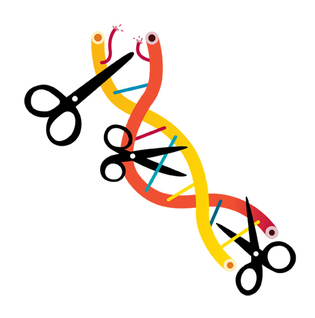
Aex Eben Meyer.
Gene editing has emerged as a tool to allow scientists to remove or rewrite faulty pieces of DNA’s instruction manual for life. These tools, refined over the past decade, can not only fix mutations in the genome, but also offer a way to engineer genomes of cells in the lab to study how genetic changes affect their behavior.
But the technology has limits. “Our ability to read genomes is much more advanced than our ability to write,” says Farren Isaacs, a professor of molecular, cellular, and developmental biology. Base editors, which can rewrite individual nucleotides (the building blocks) in a genome, are limited to making just a handful of simultaneous edits. This often isn’t enough to treat or model complex diseases such as cancer that are caused by many mutations across the genome. They are also prone to accidental edits in parts of the DNA near their target.
In a new study published in Nature Communications, Isaacs and his team engineered base editors that can make three times more edits and with higher precision. They used Cas12, a genome-cutting molecule closely related to the more commonly used Cas9. “Cas12 has an inherent ability to process more than one target, which is important if you want to hit multiple genes simultaneously,” Isaacs says.
The researchers tested different approaches to improve their ability to edit multiple genomic locations, and were able to boost the capacity of Cas12 from five simultaneous edits to 15. To make the edits more precise, they shortened the molecule that guides Cas12 to the part of the gene it needs to change.
However, Isaacs noticed some unwanted effects. Their base editor also edited other off-target locations in the genome, likely through random encounters with the DNA, he says. “That result really humbled us,” Isaacs said. He and his team are continuing to develop this technology to enable it to target more genes simultaneously, while reducing off-target edits.
His goal is to create a base editor that can make hundreds or thousands of precise edits across the genome to engineer better disease models. He also has another goal in mind that might seem futuristic: designing synthetic genomes that are encoded entirely in a lab setting. “Today, that is not feasible,” Isaacs says. “But if we can push these technologies, we can make that possible.” aparna nathan ’17
 loading
loading